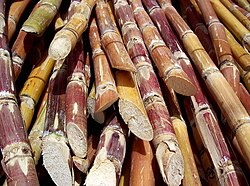Search results
Appearance
There is a page named "Hot air oven" on Wikipedia
- Hot air ovens are electrical devices which use dry heat to sterilize. They were originally developed by Louis Pasteur, and are essentially the same as...3 KB (453 words) - 15:22, 17 August 2024
- environment. In an oven without a fan, natural convection circulates hot air unevenly, so that it will be cooler at the bottom and hotter at the top than...18 KB (2,065 words) - 03:17, 8 February 2025
- air boat Hot air engine Hot air gun Hot air oven Hot air reflow Hot air (economics) Hot Air, an American conservative political blog Hot Air (film), a 2019...776 bytes (141 words) - 13:37, 14 June 2024
- A microwave oven, or simply microwave, is an electric oven that heats and cooks food by exposing it to electromagnetic radiation in the microwave frequency...88 KB (10,254 words) - 20:19, 15 April 2025
- An oven is a tool that is used to expose materials to a hot environment. Ovens contain a hollow chamber and provide a means of heating the chamber in...24 KB (2,872 words) - 17:14, 4 March 2025
- products. The standard setting for a hot air oven is at least two hours at 160 °C (320 °F). A rapid method heats air to 463.15 K (190.00 °C; 374.00 °F)...59 KB (6,981 words) - 00:49, 9 March 2025
- Dry heat sterilization (section High Velocity Hot Air)There are two types of hot air convection (Convection refers to the circulation of heated air within the chamber of the oven) sterilizers: Gravity convection...3 KB (378 words) - 12:09, 2 May 2023
- halogen oven, halogen convection oven, or halogen cooking pot is a type of oven that utilizes a halogen lamp as its heating element. Halogen ovens are often...6 KB (608 words) - 00:37, 17 November 2023
- A masonry oven, colloquially known as a brick oven or stone oven, is an oven consisting of a baking chamber made of fireproof brick, concrete, stone, clay...18 KB (2,552 words) - 23:27, 23 March 2025
- Coke oven)invention of the hot blast in iron-smelting and the introduction of the beehive coke oven. The use of a blast of hot air, instead of cold air, in the smelting...37 KB (4,623 words) - 23:16, 16 January 2025
- microbes Various stains used to stain microscopic slides to get contrast Hot air oven used in sterilizing instruments for various aseptic procedures, specially...5 KB (146 words) - 03:41, 21 March 2023
- still hot enough to ignite on exposure to air, it is cooled in the oven by introducing water concurrently with unbricking the door. As the oven remains...12 KB (1,539 words) - 22:30, 28 September 2024
- Solar oven)a fire, the food does not have a smoky flavor. HotPot panel solar cooker Solar oven in use Solar Oven made of cardboard A box cooker has a transparent...30 KB (4,037 words) - 05:16, 5 March 2025Vacuum oven Mechanical jaggery drier Furnace house Texture analyzer Band sealer with nitrogen flushing Jaggery drying-cum-storage warehouse Hot air oven Digital...26 KB (2,613 words) - 16:45, 10 March 2025
- philosophical principles. The Oven heated by hot air, (the only hot air oven ever patented,) and warranted to bake as well as any brick oven. For sale only by the
- hot! Hot, hot! Whoa, hot, hot, hot, hot, hot! [a view from the street. Randy's moans can be heard; he can be seen moving about] Whoa, whoa! Whoa, hot
- this, wash the Dutch oven (and the lid!) using hot soapy water inside and out, and rinse it thoroughly, also in hot water. Dry the oven with a towel. Then
)









